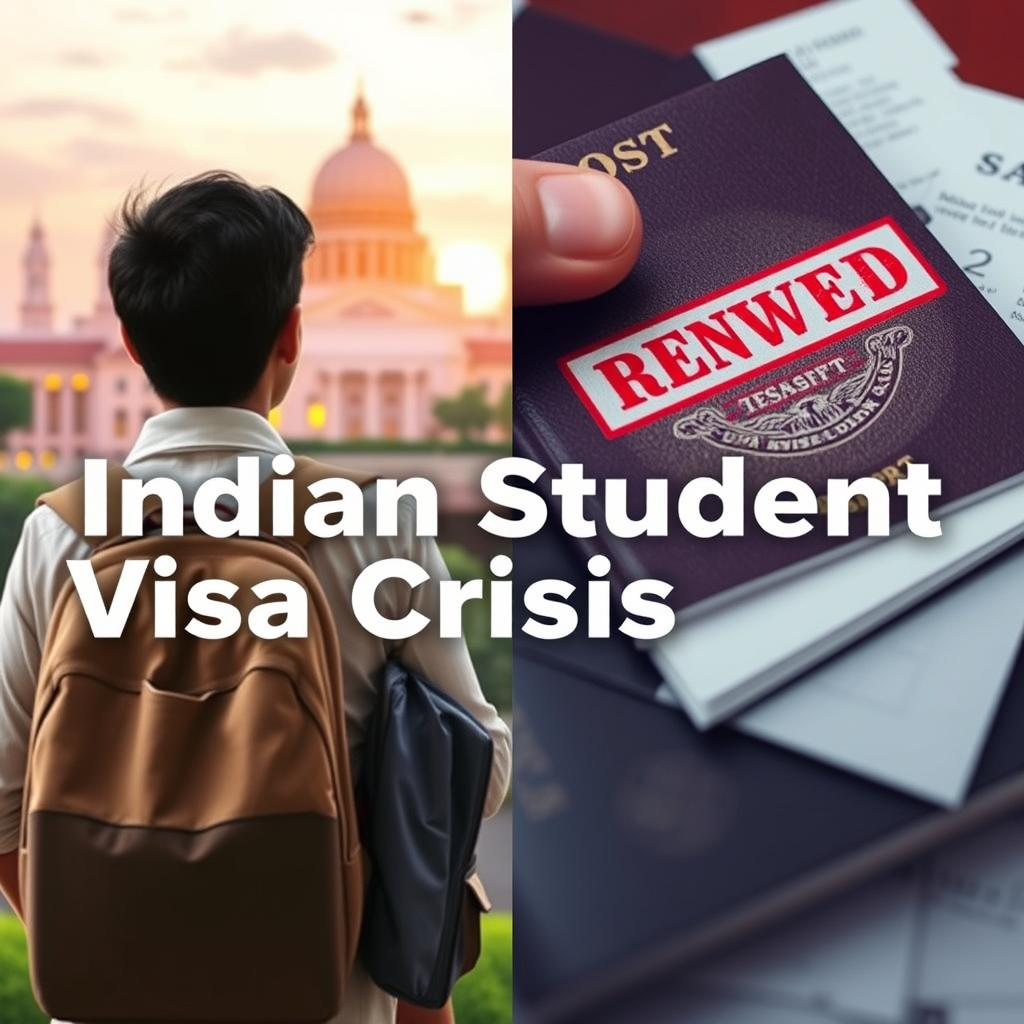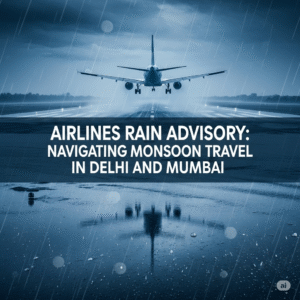For generations, an overseas education has been a beacon of aspiration for millions of young Indians. It represents a pathway to world-class learning, global opportunities, and personal growth. However, as 2025 unfolds, this well-trodden path has become fraught with unprecedented obstacles. A perfect storm of shifting immigration policies, economic pressures in host countries, and geopolitical tensions has created what many are calling the Indian student visa crisis. Aspiring students now face higher financial thresholds, new bureaucratic hurdles, and shrinking opportunities in some of their most coveted destinations. This isn’t about a lack of ambition or qualification; it’s about navigating a global landscape that is fundamentally reshaping the future of international student mobility. This comprehensive article delves into the core of this crisis, examining the changes in key countries and offering a strategic guide for Indian students to navigate these turbulent waters.
Table of Contents
The Epicenter of the Storm: Canada’s Drastic Student Visa Changes
For years, Canada has been the top destination for Indian students, celebrated for its welcoming policies and clear pathways to permanent residency. However, in a move that sent shockwaves across the globe, the Canadian government implemented drastic changes to its international student program, directly impacting tens of thousands of Indian applicants. These policies are a response to a severe housing crisis and immense pressure on social infrastructure, as detailed by media outlets.
The Two-Year Cap and Provincial Attestation Letters (PALs)
The most significant change is a two-year cap on new international student permits. For 2024, this was set at approximately 360,000 approved permits, a 35% reduction from 2023. This cap continues to influence intake for 2025. To enforce this, a new requirement was introduced: the Provincial Attestation Letter (PAL). Before applying for a study permit, an Indian student must now first secure a PAL from the province where their chosen university is located, confirming they are accounted for under the provincial quota. This adds a significant, and sometimes lengthy, new step to the application process. You can find official details on the website of Immigration, Refugees and Citizenship Canada (IRCC).
The Soaring Cost of Dreaming: Doubled Proof of Funds Requirement
Another major hurdle is the dramatic increase in the proof of funds for student visa applicants. The cost-of-living financial requirement has more than doubled. As of January 1, 2024, a single applicant must show they have CA20,635inaGuaranteedInvestmentCertificate(GIC),inadditiontotheirfirstyearoftuitionandtravelcosts.ThisisasteeprisefromthepreviousCA10,000 requirement that had been in place for years. The Government of Canada states this change is to ensure students are financially prepared for life in Canada, but it has effectively priced out many middle-class Indian families.
Diplomatic Tensions and Their Fallout
The Canada student visa changes are further complicated by the ongoing diplomatic strain between New Delhi and Ottawa. While both governments have stated that students should not be affected, the friction creates an atmosphere of uncertainty, prompting some students to reconsider their options due to concerns about future policies and stability.
A Chain Reaction: How Other Nations are Responding
The Indian student visa crisis is not confined to Canada. Other popular host nations are also tightening their belts, creating a ripple effect across the globe.
The United Kingdom’s New Stance: Restricting Dependents
The United Kingdom has long been a hub for Indian students, but it has also implemented stricter rules to curb net migration. As of January 2024, the government has enforced new UK student visa rules that prevent most international students from bringing dependent family members (spouses and children) with them. This policy, officially outlined on the UK Government’s website, primarily affects students in taught master’s programs, which are very popular among Indians. Only students enrolled in postgraduate research programs (like PhDs) are now eligible to bring dependents, a change that significantly impacts mature students with families.
Australia’s ‘Genuine Student’ Test and Higher Financial Hurdles
Australia, another top choice, has intensified its scrutiny of international students. The government has replaced the previous Genuine Temporary Entrant (GTE) requirement with a new “Genuine Student” (GS) test. This new test, as explained by the Australian Department of Home Affairs, requires applicants to provide more detailed and targeted answers about their study intentions and future plans. Alongside this, the Australia student visa policy has also been updated with higher financial capacity requirements, forcing students to show proof of access to A$29,710 to cover one year of living costs.
Why the Shift? The Global Pushback on International Student Mobility
The coordinated tightening of policies across these nations is not a coincidence. It stems from a combination of shared domestic challenges and a re-evaluation of the benefits and costs of large-scale international student mobility. The primary drivers include:
- Housing Shortages: In countries like Canada and Australia, a rapid influx of people, including students, has outpaced housing supply, leading to soaring rents and a housing affordability crisis.
- Strain on Infrastructure: Public services such as healthcare and transportation are feeling the pressure from a growing population.
- Concerns Over ‘Backdoor’ Immigration: There is a growing political narrative in some countries that the student visa route has been exploited as a de facto work visa or a pathway to permanent residency with less scrutiny.
- Exploitation of Students: Reports of fraudulent “ghost colleges” and the exploitation of international students have led to calls for greater regulation and a focus on attracting only “genuine” students to reputable institutions.
Navigating the Turbulence: A Strategic Guide for Indian Students
While the landscape of study abroad challenges for Indians is more daunting than ever, it is not impassable. Success now requires a more strategic, informed, and resilient approach.
1. Financial Preparedness is Non-Negotiable
The new, higher proof of funds for student visa requirements in Canada and Australia are the new reality. Start financial planning at least 1-2 years before your intended application. Explore education loan options early and ensure your funds are well-documented and from legitimate sources.
2. Diversify Your Options
While the US, UK, Canada, and Australia have been the “big four,” it’s time to seriously consider other excellent options. Countries like Ireland (which has a strong tech sector), Germany (known for low-cost tuition), New Zealand, and France are actively looking to attract talented Indian students and offer high-quality education.
3. Authenticity is Key
With the introduction of tests like Australia’s GS requirement, the “why” of your application is more important than ever. Your Statement of Purpose (SOP) must be impeccable, genuine, and tailored specifically to your chosen course and institution. Clearly articulate your academic and career goals and your reasons for choosing that specific country.
4. Seek Professional, Ethical Guidance
Navigating these complex rules may require professional help. However, be extremely cautious. Choose reputable education consultants who are transparent about their fees and processes. Avoid anyone who promises guaranteed visas or suggests using fraudulent means.
Conclusion
The Indian student visa crisis of 2025 marks a pivotal turning point for foreign university admissions. The era of relatively open doors in key Western countries has given way to a more controlled, selective, and financially demanding system. The dream of studying abroad is not over for Indian students, but the rules of the game have changed. Success now belongs to those who are well-researched, financially prepared, and strategic in their approach. By understanding the policies, diversifying their choices, and presenting an authentic and compelling case, Indian students can still overcome these study abroad challenges for Indians and achieve their global ambitions.
Frequently Asked Questions (FAQ)
Q1: What is a Provincial Attestation Letter (PAL) and how do I get one?
A: A PAL is a letter issued by a Canadian province or territory confirming that the applicant has a space under its federal cap for international students. You cannot apply for one directly. Once you receive an offer letter from a Designated Learning Institution (DLI) in Canada, the institution will request the PAL from the provincial government on your behalf and provide it to you for your study permit application.
Q2: Can I still take my spouse to the UK if I am pursuing a one-year Master’s degree?
A: No. Under the new UK student visa rules effective from 2024, students on taught postgraduate courses (like most one-year Master’s programs) can no longer bring dependents. Only students enrolled in postgraduate programs designated as research programs (e.g., PhD, other research-based doctorates) are exempt from this rule.
Q3: How is the Australian ‘Genuine Student’ (GS) test different from the old GTE requirement?
A: The GS test is more rigorous. While the GTE focused on ensuring the student’s intent was temporary, the GS test requires a deeper justification of the student’s choice of course, provider, and how it aligns with their future career plans. It puts a greater onus on the applicant to prove they are a genuine student seeking quality education rather than using the visa for other purposes.
Q4: Are there good European countries for Indian students besides the UK?
A: Absolutely. Ireland has become a major hub, especially for tech and business studies, and offers post-study work visas. Germany is renowned for its public universities with zero or very low tuition fees, even for international students. The Netherlands and France also offer a wide range of courses in English and are increasingly popular among Indian students.
Related Topics for Future Reading
- Official IRCC Guide for Studying in Canada
- Education in Australia: A Guide for International Students
- Study UK: Official Guide from the British Council
- DAAD: Your Guide to Studying in Germany
Disclaimer: The information in this article is for general informational purposes only and is based on data available as of August 2025. Immigration policies are dynamic and subject to frequent changes. All students are strongly advised to consult the official government websites of their desired destination countries for the most current and accurate visa information.
Affiliate Disclosure: This article may contain affiliate links. If you use these links to buy something, we may earn a commission at no additional cost to you. This helps us continue to provide valuable and well-researched content.







